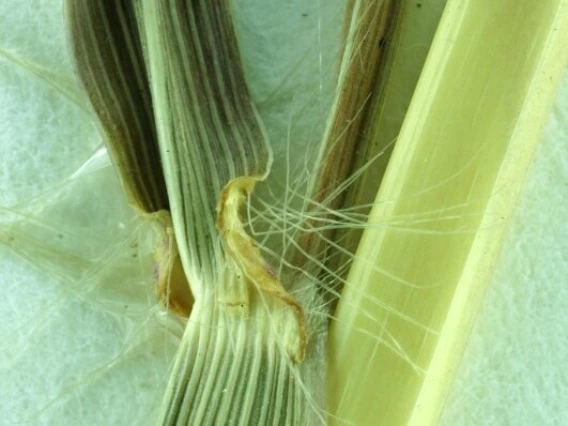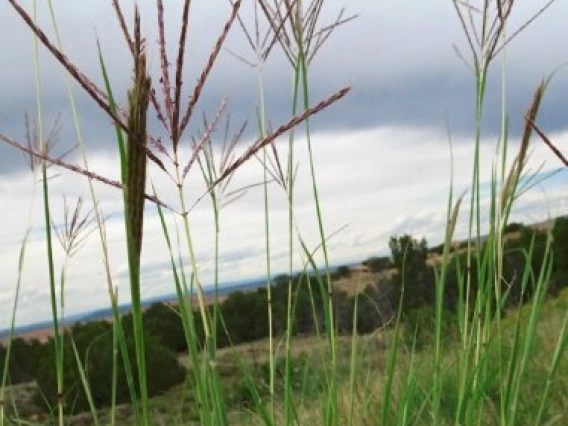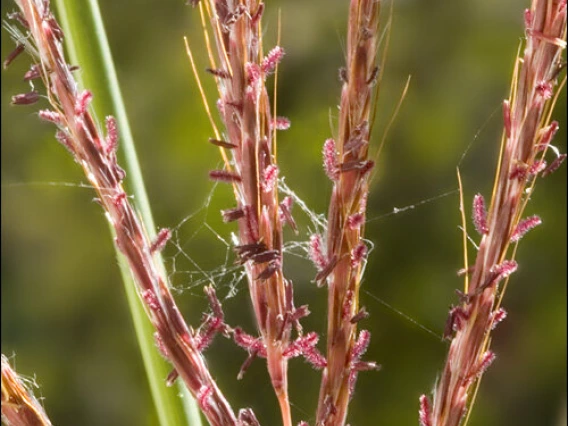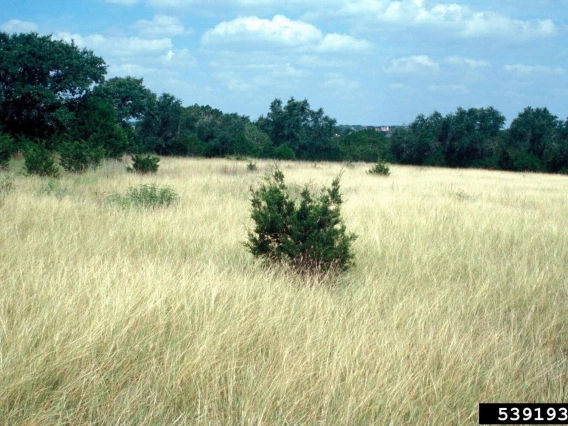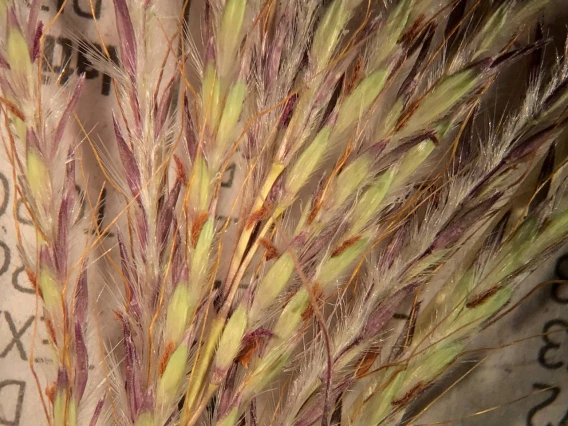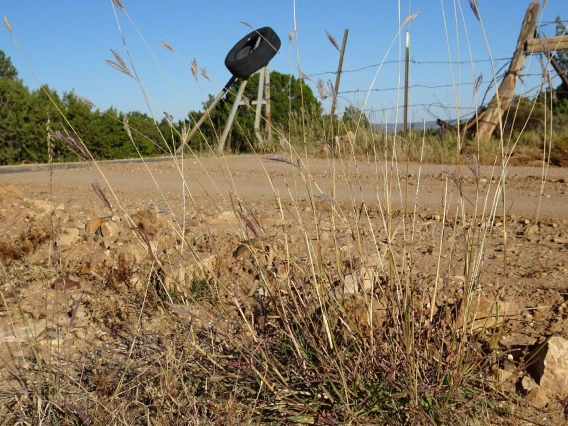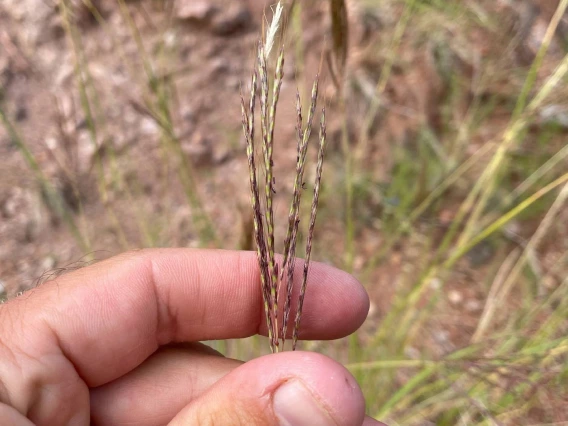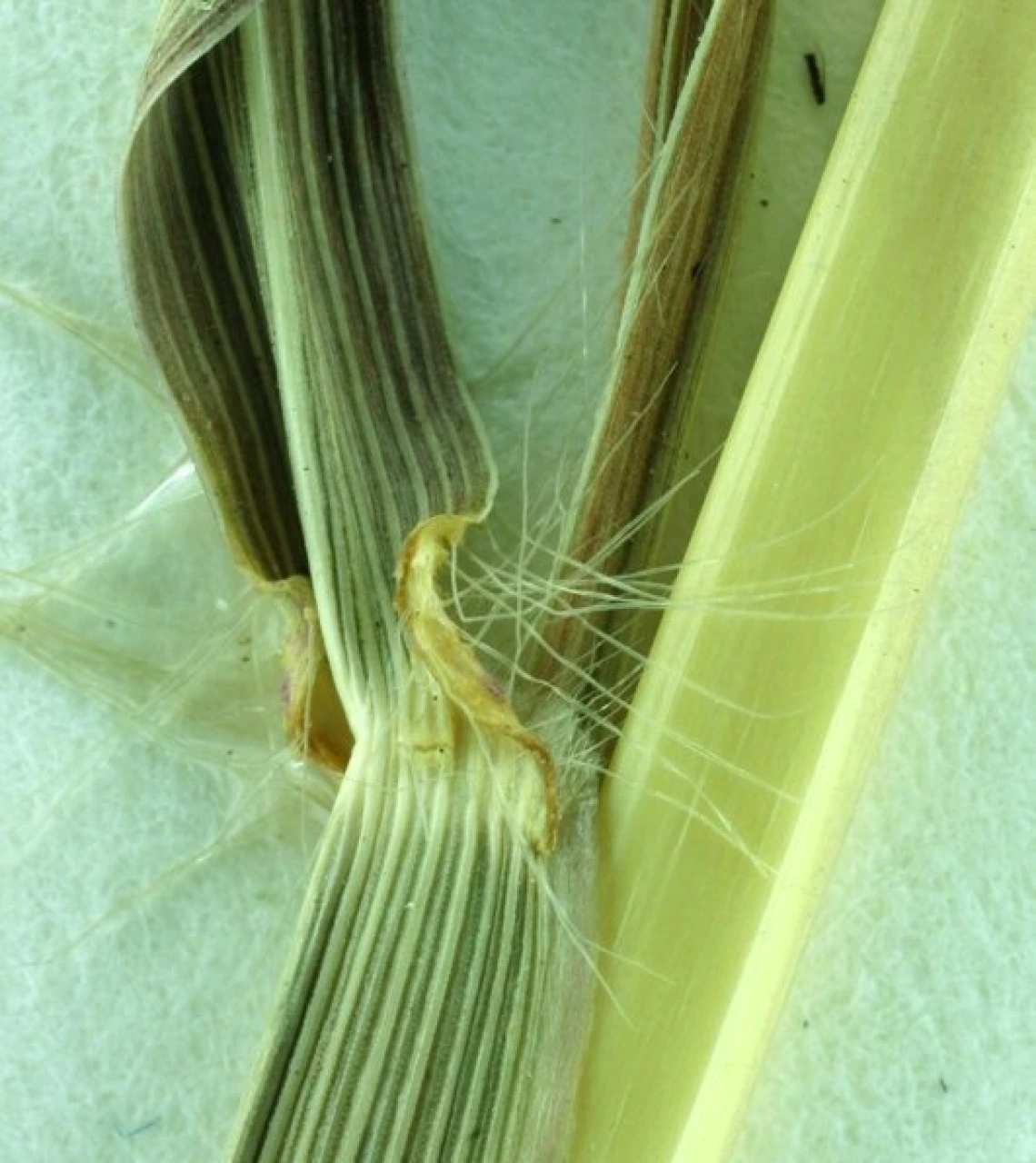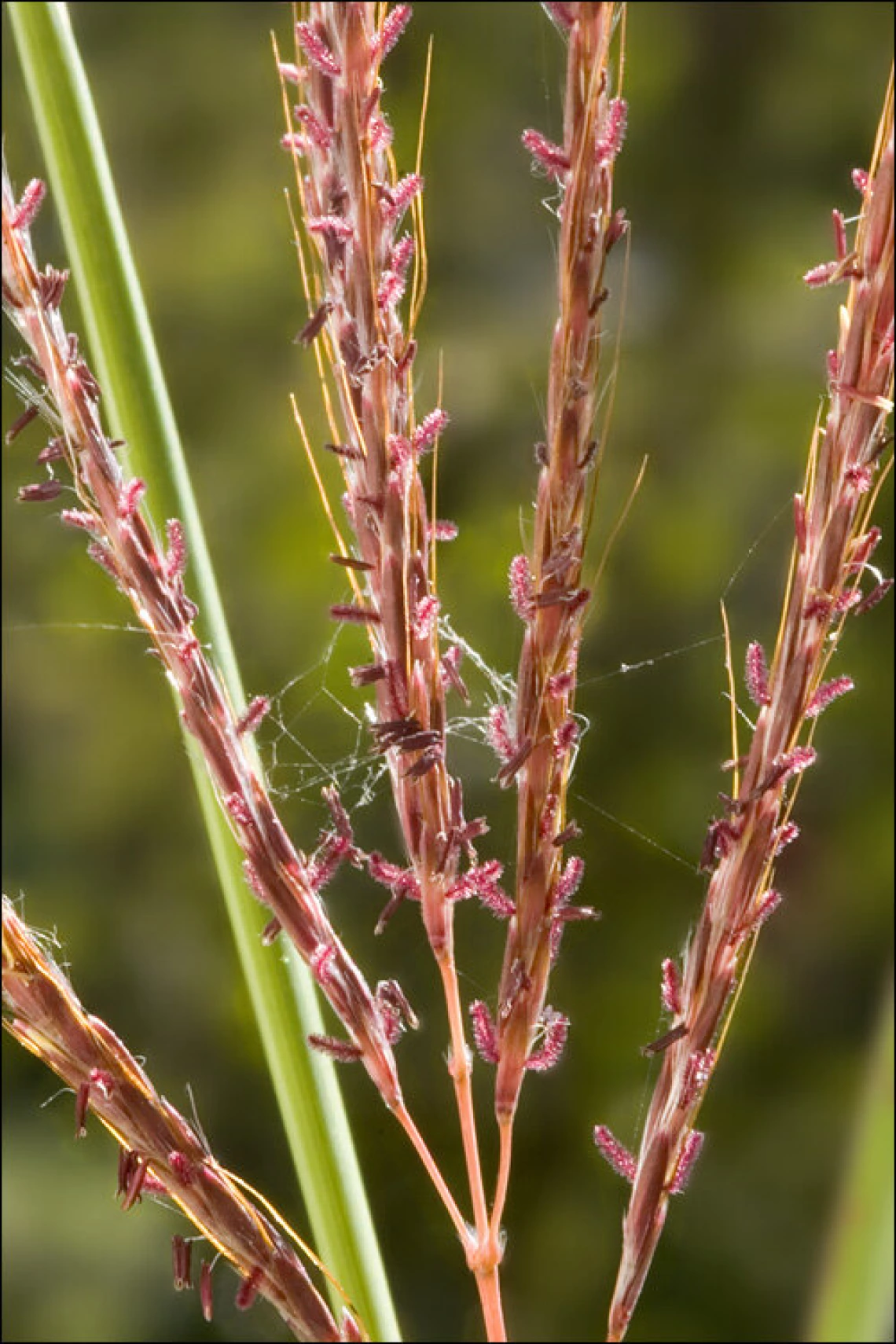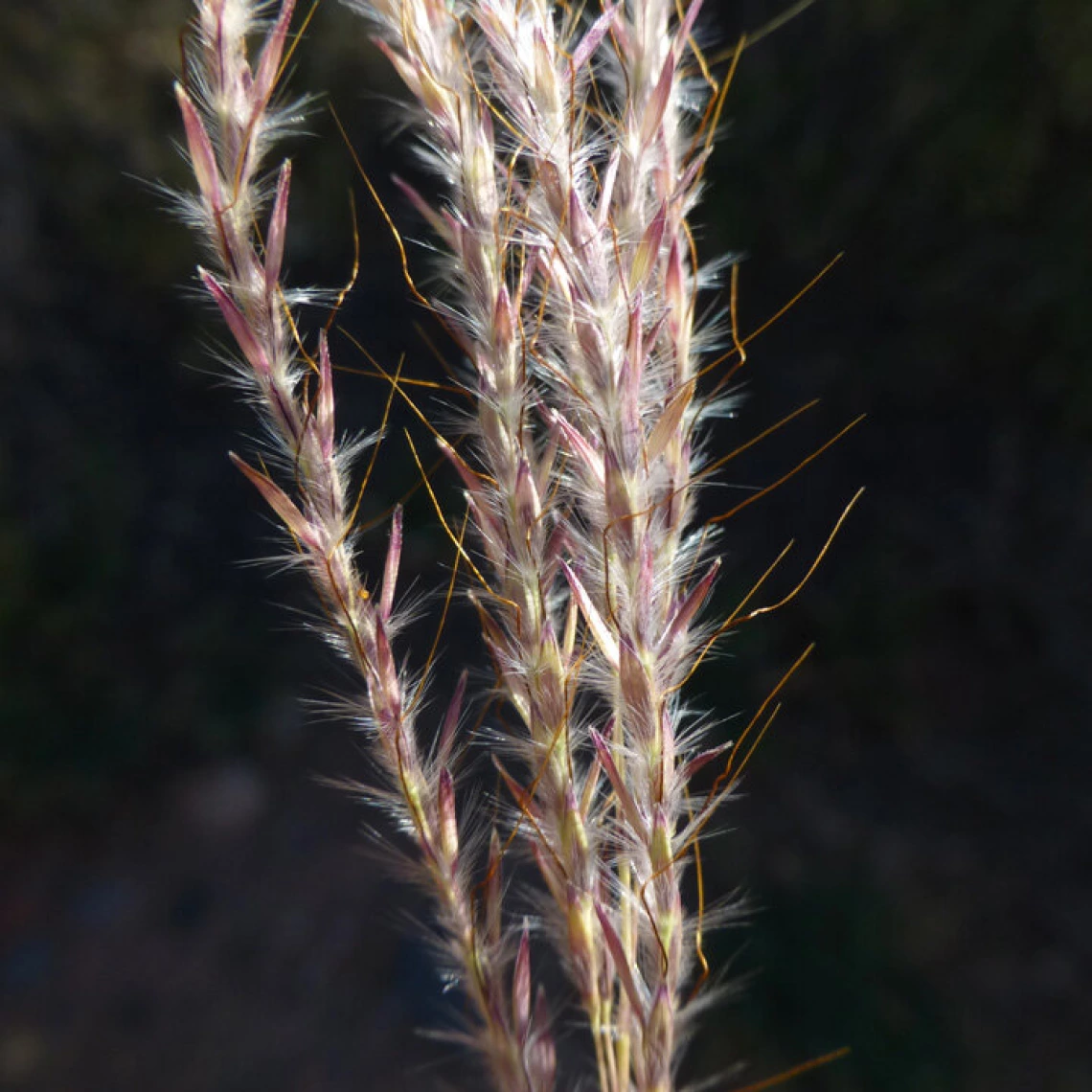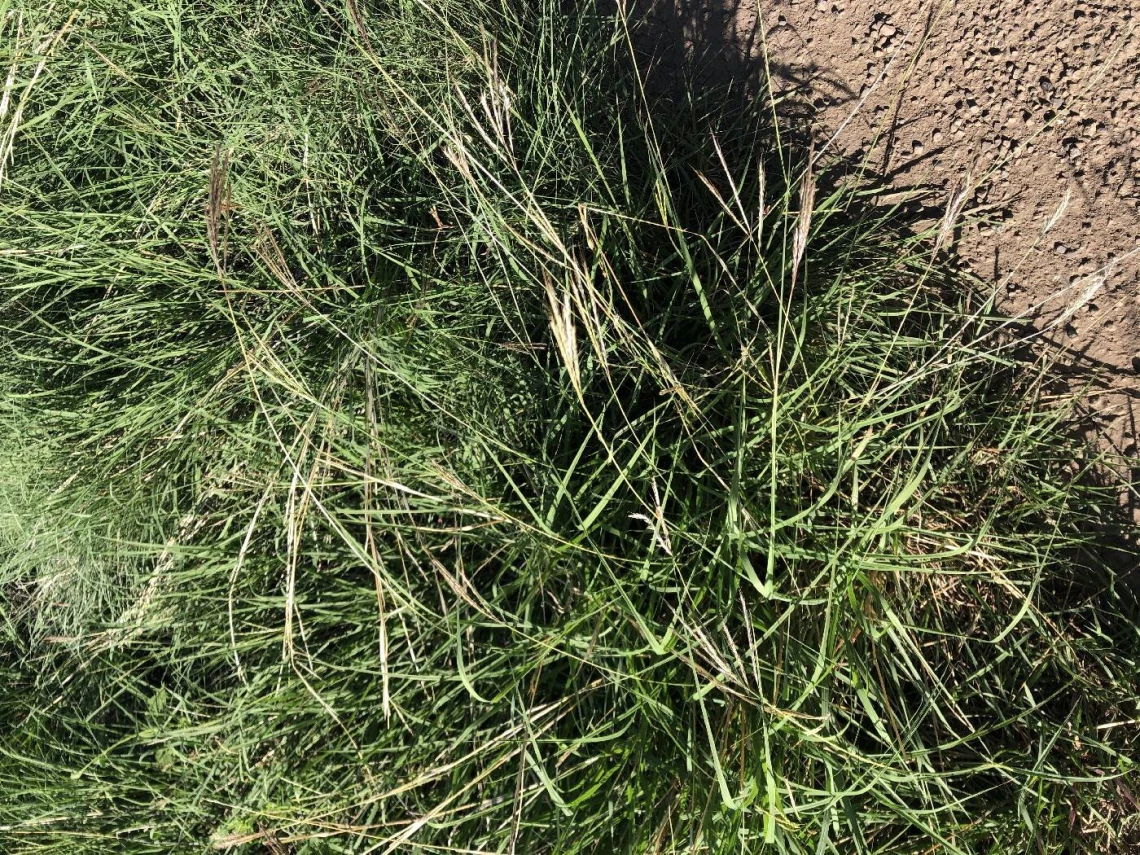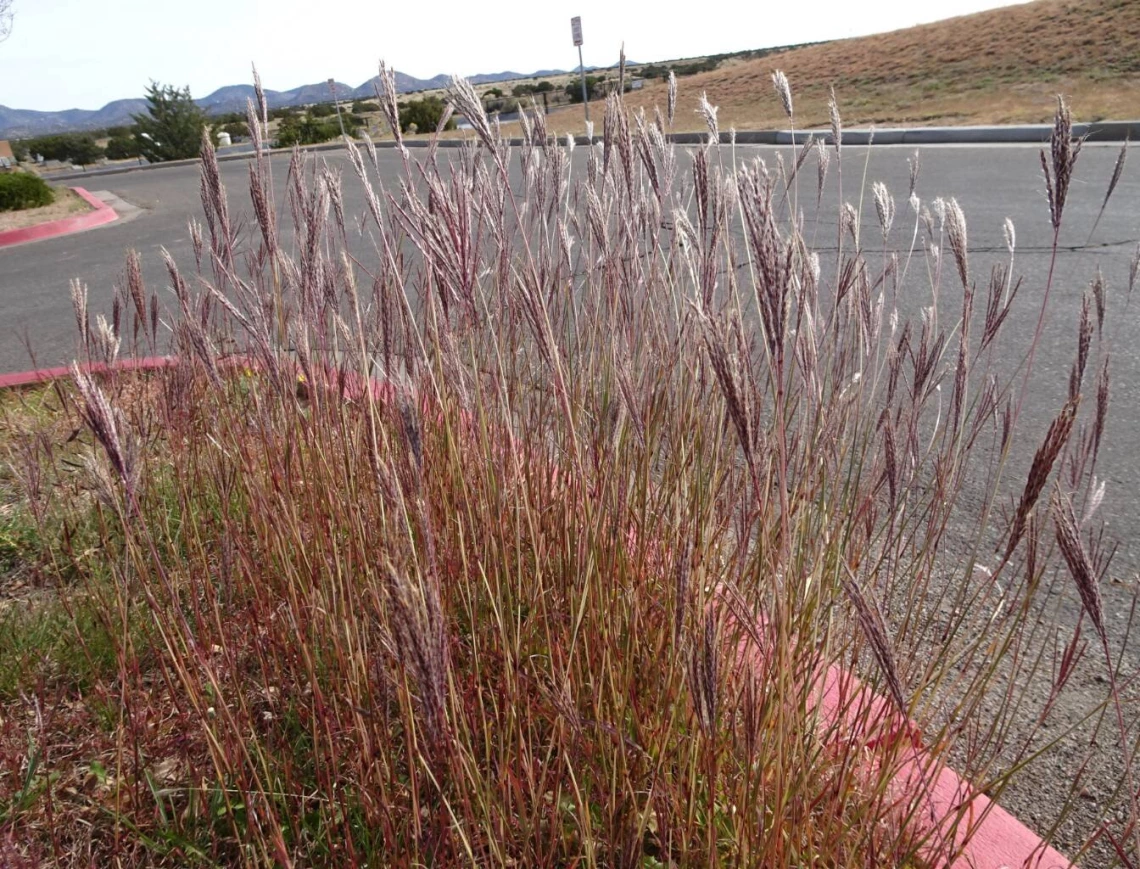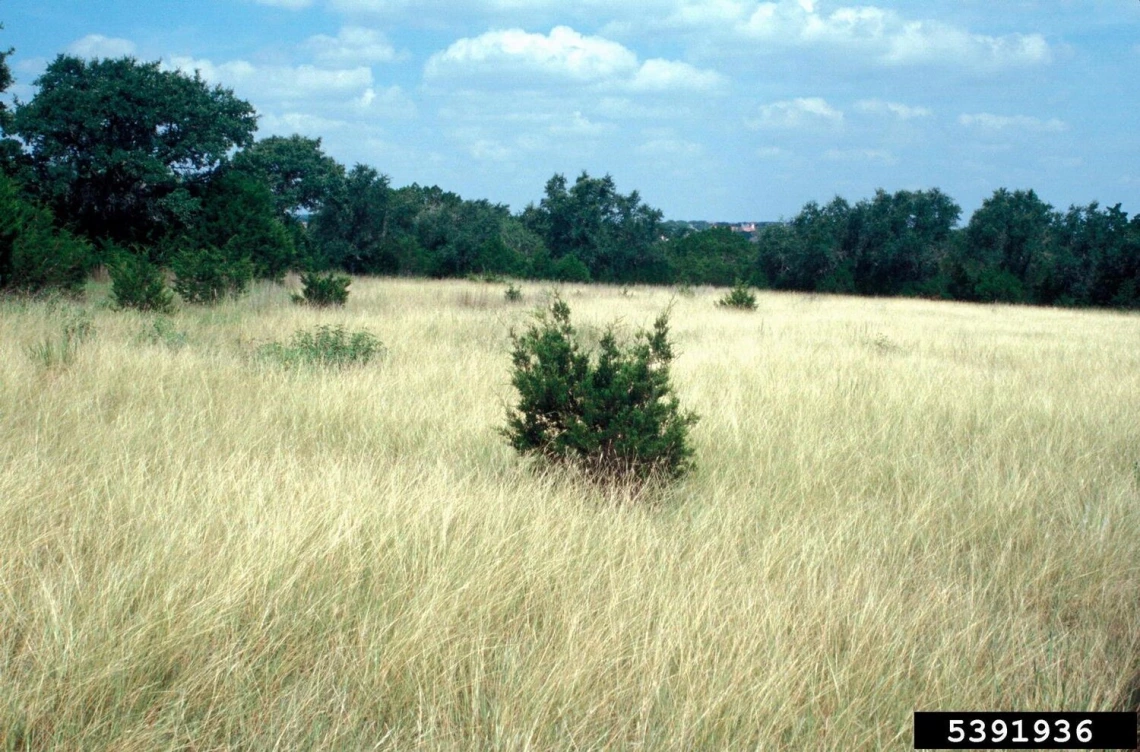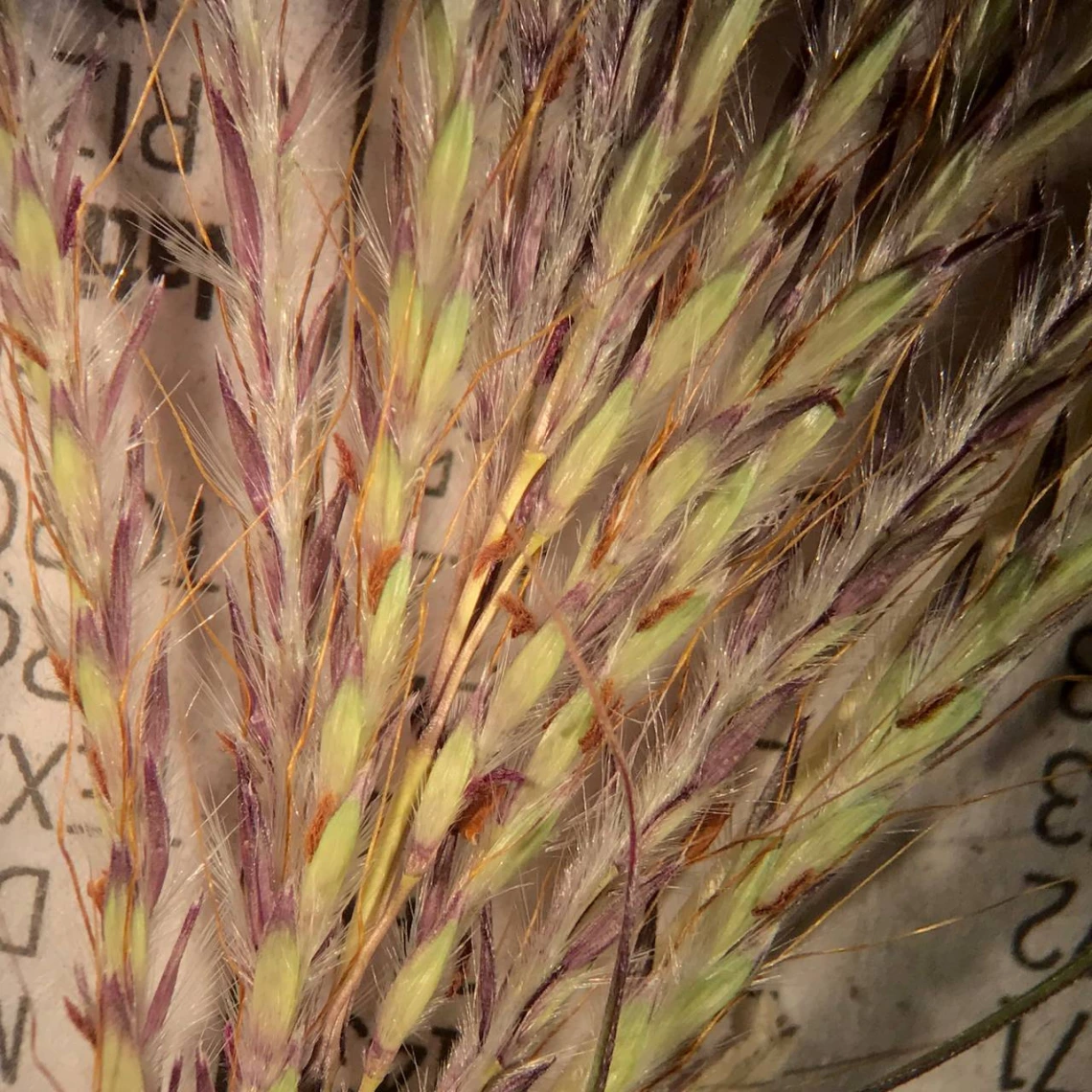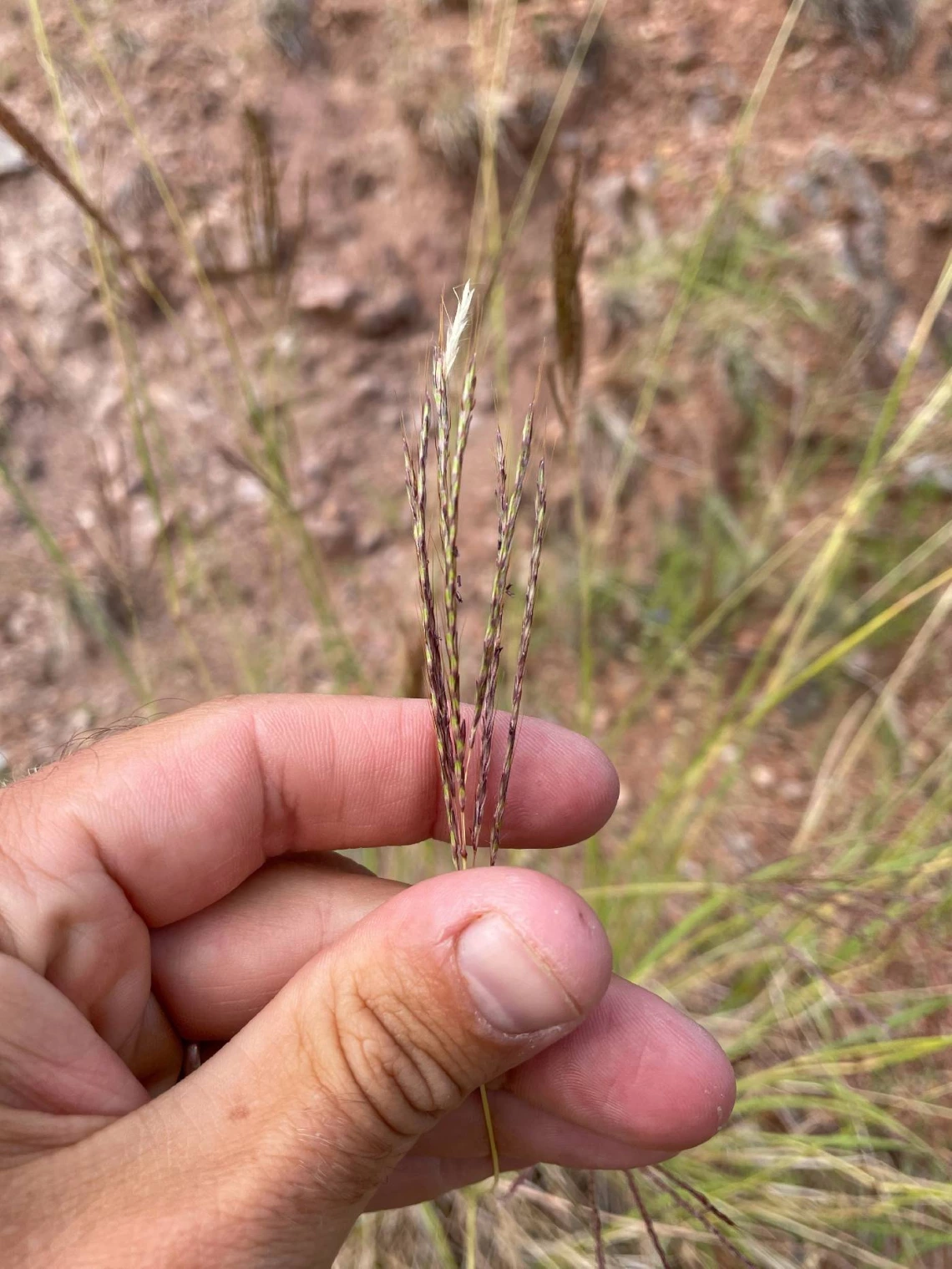Image
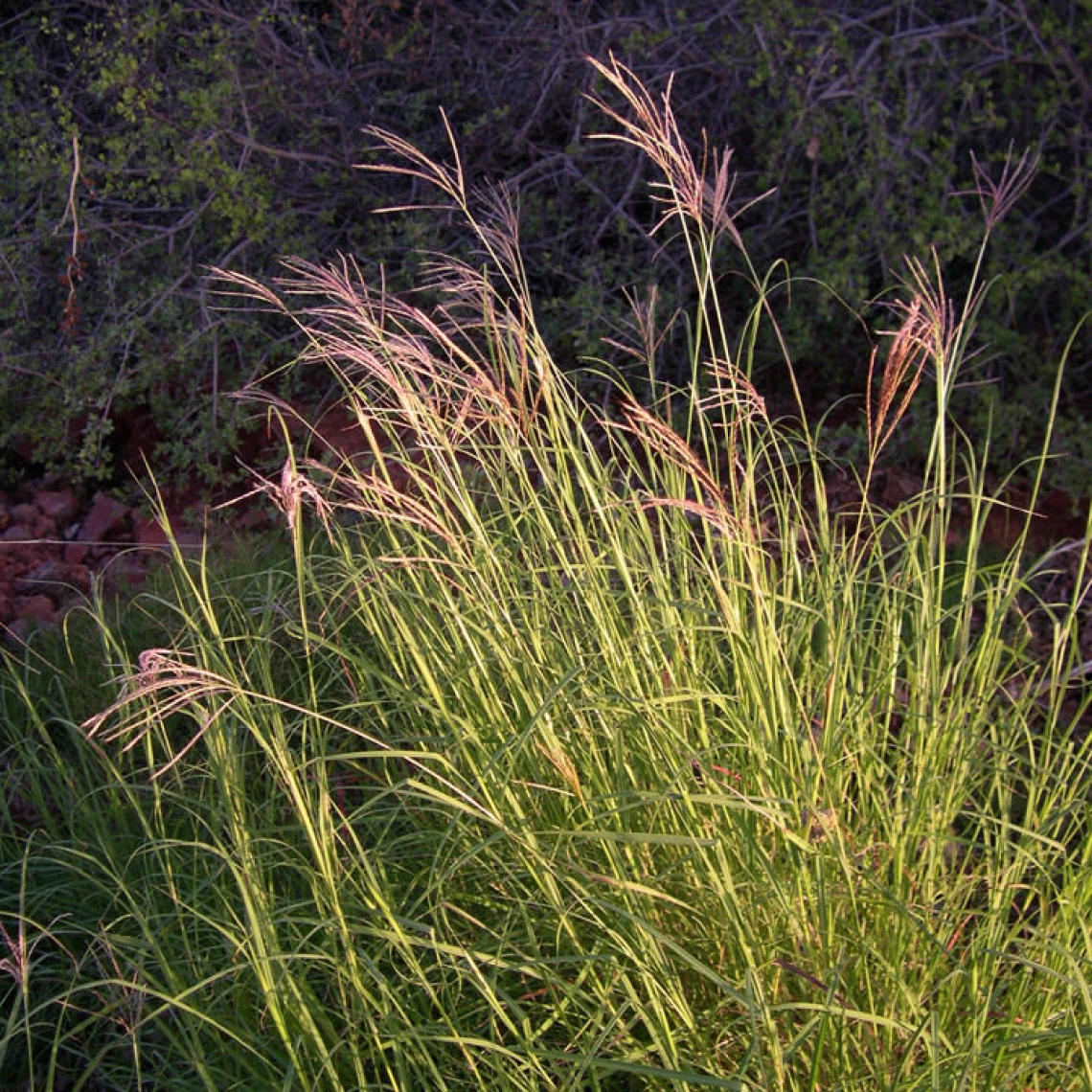
Yellow bluestem grass
Max Licher, swbiodiversity.org/seinet
Common Name(s)
Yellow bluestem grass
Yellow bluestem
Turkestan beard grass
King Ranch bluestem
Scientific Name
Bothriochloa ischaemum
Family
Grass family (Poaceae)
Reasons for concern
This aggressive, rapidly spreading, and persistent species can quickly take over fields and disturbed or unattended areas, easily outcompeting native species, reducing plant diversity and wildlife habitat. Although introduced into the U.S. for forage and erosion control, it is not favored by animals for forage and it sheds chemicals that make the soil inhospitable for native plants. Yellow bluestem can form huge monocultures and, once established, is extremely difficult to eradicate, making it ready fuel for wildfires. The grass is present and continues to spread rapidly in Arizona.
Classification
Non-native. Categorized as a Class B noxious plant on the Arizona Noxious Weed list, meaning that it “may be a high priority pest for quarantine, control, or mitigation if a significant threat to a crop, commodity, or habitat is known to exist.”
Botanical description
Tall, clump-forming, yellow-green clump grass with a reddish-purple flower cluster held above the leaves and stem.
Leaves
Flat or folded, usually smooth. Yellow-green color, mostly at the base of the plant 1” to 10” long, with scattered hairs. Parallel veins.
Stem(s)
Flowering stem up to 4 feet tall. Rounded leaf sheaths surround the base of slender stem. Green, turning yellow when mature, with very prominent brown to purple nodes. Stems also spread densely underground.
Inflorescence
Inflorescence is a silvery, reddish purple. Flower cluster branches are taller than the central stem. Bloom time is late June through July, with seeding time throughout the fall. Seed head is shaped like a “turkey foot.” Plants produce massive numbers of brown seeds.
Roots
Extremely dense.
Native to
Southern Europe, northern Africa, and Asia. Brought to the U.S. for forage and erosion control. It is classified as an “Old World Bluestem,” in contrast to the Bluestem grasses that are native to North America.
Lifecycle
Perennial
Reproduction
By seeds and underground stems.
Weedy Characteristics
Very difficult to eradicate. Underground stems form a dense sod, which native plants cannot penetrate in order to complete. The plants also shed chemicals into the soil that inhibit the growth of native plants.
Look-alike Plants
Yellow bluestem looks much like some native grasses in northern Arizona, such as Little bluestem (Schizachyrium scoparium) and Cane beard grass (Bothriochloa barbinodis). The best way to distinguish among them is to look closely at the flower clusters.
Control Strategies
Never let them go to seed. For small populations, hand pull or dig and bag the plants, wearing gloves. Get all the roots and step down any loose soil. Monitor the site frequently for regrowth. For larger infestations, consult with a professional as repeated applications of herbicide may be necessary. Contact your local extension office for more information, for help with identification, or to report an infestation on public property or along roadsides.
References
- Yellow bluestem: An Encroaching Invasive Grass, a Webinar presented by Ashley Hall, Gila County Cooperative Extension
- Old World Bluestems, Missouri Department of Conservation
- Native or invasive? A Guide to the Bluestem Grasses of Kansas, Kansas Department of Agriculture
- Old World Bluestem, Illinois Wildflowers


